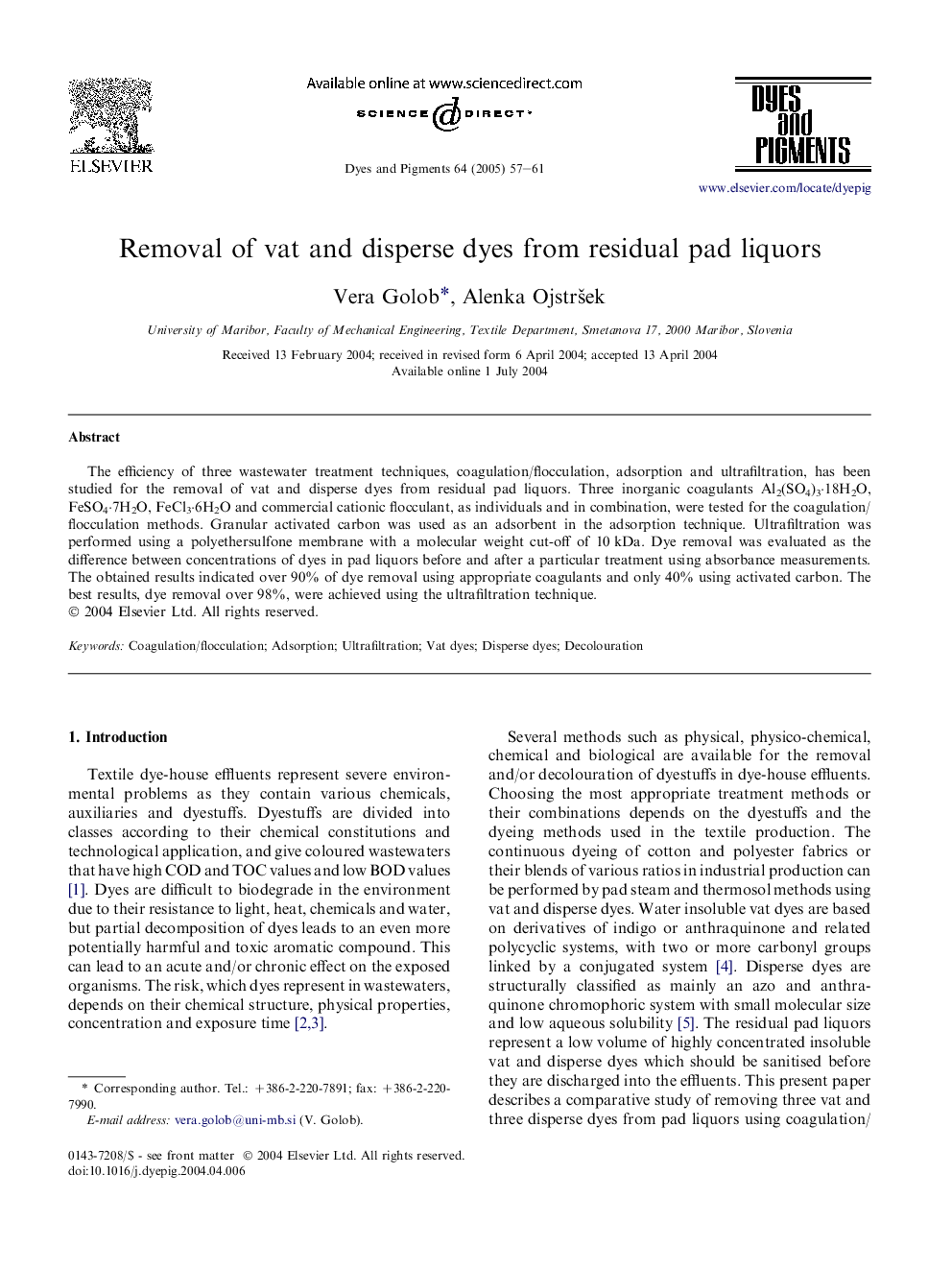| Article ID | Journal | Published Year | Pages | File Type |
|---|---|---|---|---|
| 10266642 | Dyes and Pigments | 2005 | 5 Pages |
Abstract
The efficiency of three wastewater treatment techniques, coagulation/flocculation, adsorption and ultrafiltration, has been studied for the removal of vat and disperse dyes from residual pad liquors. Three inorganic coagulants Al2(SO4)3·18H2O, FeSO4·7H2O, FeCl3·6H2O and commercial cationic flocculant, as individuals and in combination, were tested for the coagulation/flocculation methods. Granular activated carbon was used as an adsorbent in the adsorption technique. Ultrafiltration was performed using a polyethersulfone membrane with a molecular weight cut-off of 10 kDa. Dye removal was evaluated as the difference between concentrations of dyes in pad liquors before and after a particular treatment using absorbance measurements. The obtained results indicated over 90% of dye removal using appropriate coagulants and only 40% using activated carbon. The best results, dye removal over 98%, were achieved using the ultrafiltration technique.
Related Topics
Physical Sciences and Engineering
Chemical Engineering
Chemical Engineering (General)
Authors
Vera Golob, Alenka Ojstršek,
